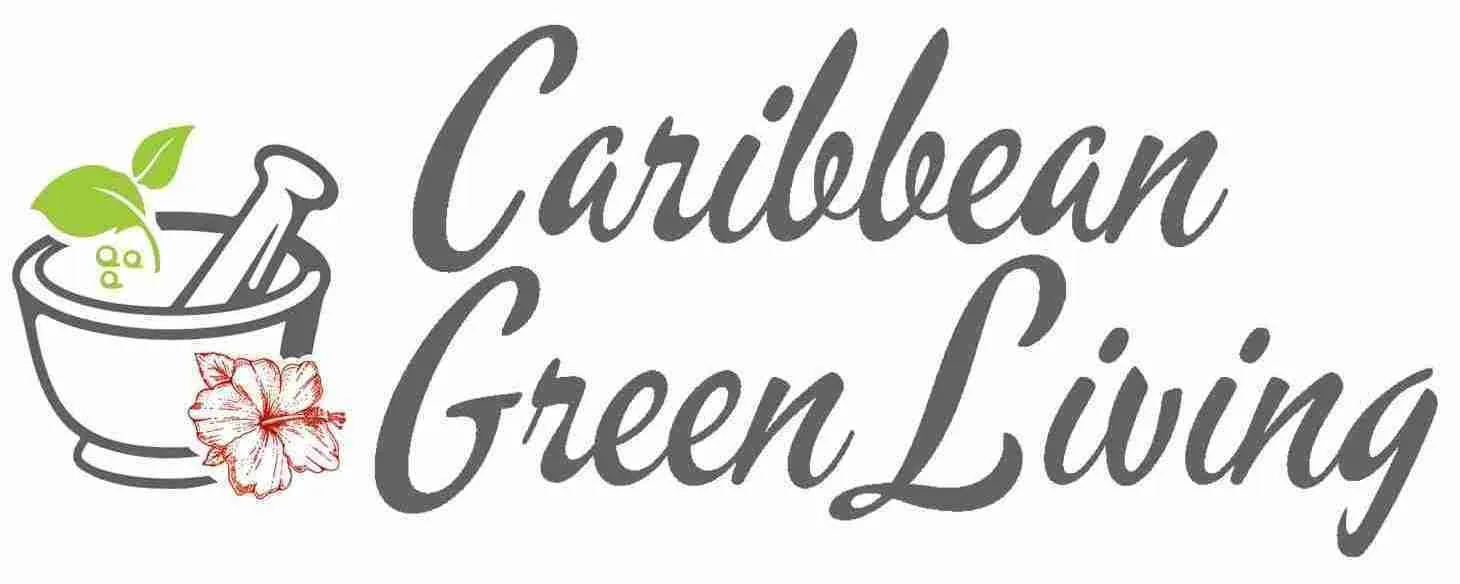Haitian Traditional Dress, The Karabela Dress
Haitian traditional dress bursts with vibrant colors and rich symbolism. Often worn for celebrations and cultural events, these garments tell a story about Haitian heritage and resilience. From the iconic “Karabela” dress to the elegant “guayabera” shirt, Haitian clothing reflects a unique blend of African, European, and Taíno influences, offering a glimpse into the nation’s fascinating history.
Karabela Dress Origins
Tracing back to the 18th century, the Karabela dress stands as a testament to the rich tapestry of Haitian history. Originally, this attire was the daily wear for Haitian women, a simple yet profound expression of their identity and lifestyle. Over time, it has transformed into a ceremonial outfit worn during significant events and holidays, marking its importance in Haitian culture.
Transparency Notice: This post is not sponsored, and we did not receive any compensation for featuring the stores mentioned. Clicking links to these stores will not result in a commission for us. However, please note that we may earn a commission through affiliate links for Amazon products included in this post.
Crafted from natural fibers, linen, or a special cotton fabric called chambray, the Karabela dress emphasizes comfort alongside aesthetics, a feature deeply rooted in the pragmatic approach of the Haitian way of life. The choice of materials signifies a connection to the land, a homage to the simplicity and resilience of the Haitian people. It also hints at a bygone era when resources were limited, and yet creativity and beauty thrived.
The vibrant colors of red and blue dominate the palette of the Karabela dress, mirroring the national flag and symbolizing the spirit of freedom and independence that is central to Haitian history. These colors are not arbitrary; they tell stories of struggle, triumph, and the unyielding pride of a nation that fought fiercely for its liberty.
Embroideries and laces at the hem add another layer of meaning. These intricate details are a nod to the craftsmanship and artistic talent inherent in Haitian culture. Each stitch carries a narrative, a celebration of heritage, and a defiance against a past marked by hardship.
It’s noteworthy that the Karabela dress is closely associated with other Caribbean nations’ traditional attire, albeit known under different names. This suggests a shared history and cultural exchange among these islands, woven together through threads of colonialism, slavery, and eventual emancipation.
Today, the sight of women elegantly donning Karabela dresses during Mass or while attending traditional festivals in Haiti is both heartwarming and awe-inspiring. It serves as a vivid reminder of how attire can serve as a conduit for expressing collective memory, values, and hopes.
Handmade Karabelas speak volumes about the personal touch that each creator lends to their work. This tradition refers to times when every dress was carefully crafted by hand, making each piece unique. This aspect of Haitian culture, where modernity is interlaced with tradition, showcases an enduring appreciation for individuality within the communal fabric.
An integral part of Haitian identity, the Karabela dress transcends mere fashion. It embodies a rich cultural heritage, serving as both a marker of tradition and a statement of resilience and pride. In its colors, designs, and fabric lies the story of Haiti—echoes of the past, whispers of the present, and hopes for a brighter future.
What is Chambray
Chambray is a lightweight, plain-weave fabric typically made from cotton, although it can also be made from linen or silk. Here’s a breakdown of its key characteristics:
Look and Feel:
- Color: Traditionally light blue, but comes in a variety of colors today.
- Texture: Softer and thinner than denim due to the weaving technique.
- Appearance: Has a subtle two-toned effect due to the use of colored yarn in the warp (lengthwise threads) and white yarn in the weft (crosswise threads).
Comparison to Denim:
- Often confused with denim because of the similar color and weaving style with colored warp and white weft threads.
- However, chambray uses a plain weave, where threads alternate one over one, resulting in a lighter and more breathable fabric. Denim uses a twill weave, creating a sturdier and more structured material.
Uses:
- Primarily used for clothing, especially shirts, dresses, and lightweight jackets.
- Can also be used for household items like bed sheets or upholstery due to its breathability and soft texture (especially higher thread count chambray).
Origin:
- The word “chambray” is derived from “cambric,” another lightweight plain-weave fabric.
- Originally made from linen, the term “chambray” came to encompass cotton versions in the 18th and 19th centuries.

Haitian Traditional Dress Cultural Significance
The Karabela dress’s imprint on Haitian society cannot be understated. In the realm of festivals, weddings, and formal gatherings, its presence is a dazzling spectacle that captures the essence of Haitian vibrance and tradition. These events are not just a matter for the individual but a communal celebration where the Karabela serves as a connecting fiber, tying everyone to a shared ancestral legacy.
At weddings, the dress transcends mere fashion; it becomes a vessel through which historical continuities and familial bonds are honored. The brides adorned in Karabela dresses are not just participating in a personal ceremony but are also paying homage to generations of Haitian women who came before them. These dresses, with their intricate designs and radiant colors, are a visual symphony celebrating love and unity under the banner of Haitian heritage.
During festivals, the streets come alive with colors, music, and dance—with the Karabela taking center stage. These public spectacles are an open-air museum of Haitian culture, displaying the rich tapestry of the nation’s history and the resilient spirit of its people. The Karabela, in this context, is more than an item of clothing; it is a statement of identity and pride, a declaration of belonging to a vibrant and indomitable community.
Haitian folklore has embraced the Karabela dress, embedding it within tales that speak to the island’s soul. These stories passed down through generations, often feature characters donned in Karabela, showcasing the dress’s symbolic weight in conveying moral and cultural values. The narratives serve as a gateway for younger generations to explore and connect with their heritage, understanding the significance of their traditional dress in the continuum of Haitian identity.
The Karabela dress’s role in expressing national pride and heritage is undeniable. It stands as a symbol of freedom and resilience, reflecting the arduous journey of a people who fought for their right to exist as a nation. It’s a reminder of the struggles endured and the victories achieved—a wearable monument to the spirit of Haiti. In its fabric weaves the narratives of defiance against colonization, the triumph of independence, and the ongoing quest for cultural preservation and identity formation.
In contemporary Haiti, the Karabela dress has not lost its relevance. On the contrary, it has found new avenues of expression, adapting to modern moments while retaining its cultural core. It is celebrated in art, fashion shows, and cultural expositions both on the island and in the diaspora, serving as a bridge connecting Haitians around the globe to their homeland and to each other.
Through the Karabela dress, Haitians articulate their past struggles, present joys, and future aspirations. It embodies a heritage that is as embracive as it is exclusionary, allowing those who wear it to carry their history with pride, manifesting a distinct identity in a globalized world. In every thread, seam, and color lies the enduring legacy of a people whose reliance on strength, beauty, and community has seen them through the best and worst of times—a testament to the indefatigable Haitian spirit.

Modern Interpretations
In the bustling lanes of modern fashion, where styles intermingle, and global influences collide, the Karabela dress is witnessing a renaissance—a blending of epochs and cultures, resonating with the young and the old alike. Modern Haitian designers, armed with a reverence for their rich history, are weaving the traditional aspects of the Karabela into contemporary haute couture, creating a fascinating hybrid that speaks to both the past and the present.
This fusion is not merely about aesthetics but a statement of identity and resilience; it’s a dialogue between the generations, an homage to roots while firmly staying grounded in today’s world. Traditional cotton and linen fabrics are now being complemented with modern materials, introducing durability and comfort without compromising the authenticity of the original designs. The iconic red and blue colors of the Karabela are being reinterpreted in various shades and patterns, allowing for personal expression within the framework of heritage.
Perhaps most intriguing is how these modern interpretations are nurturing a sense of belonging among the Haitian diaspora. For those miles away from their homeland, the dress serves as a tactile memory, a piece of Haiti that they can literally wrap around themselves. In cities across the United States, Canada, and beyond, the diaspora is donning contemporary versions of the Karabela at cultural festivals, weddings, and even in casual settings, showcasing their pride and connecting with their roots.
Social media platforms and online boutiques play a pivotal role in this resurgence, enabling Haitians abroad to procure these dresses, share their stories, and celebrate their heritage with an international audience. Designers and wearers alike utilize hashtags and digital storytelling to share the evolution of the Karabela, its significance in their lives today, and its role in their cultural identity, creating a digital tapestry rich with Haitian ethos.
The allure of the modern Karabela also lies in its inclusivity; it is adorned by individuals of all ages, genders, and backgrounds, showcasing the universality of its appeal. Men, too, are embracing elements of Karabela styling in their attire, bringing a fresh perspective to traditional menswear in Haiti and beyond.
‘Fusion fashion’ shows see the Karabela taking the spotlight, merging with other cultural dress elements, symbolizing global unity while elevating Haitian craftsmanship onto the world stage. Designers are experimenting boldly, adding sequins, silk, or eco-friendly fibers to their creations, shifting the narrative of the Karabela from a garment tethered to the past to a dynamic symbol of sustainable, global fashion.
Engaging with the broader canvas of cultural attire, these modern interpretations of the Karabela underscore a significant trend: that of globalization not as a force of cultural erasure but as a means of cultural exchange and revival. They illustrate how tradition can adapt and thrive, celebrating cultural identity in a shifting world.
The Karabela is not just enduring—it’s thriving, adapting to the rhythms of modern life while remaining steadfastly loyal to its roots. Whether it’s through the lens of a high-fashion shoot or the casual wear of a community festival, each iteration is a testament to the vibrant, unyielding spirit of Haiti. In this confluence of old and new, tradition finds its future, ensuring that the essence of the Karabela dress—and, through it, the essence of Haiti—continues to dazzle and inspire across generations and geographies.

Artisanal Craftsmanship
The journey of creating a Karabela dress is a meticulous and labor-intensive endeavor that touches on the essence of Haitian artisanal craftsmanship. From the sourcing of fabrics to the final stitch, each step is imbued with history, skill, and a deep sense of cultural pride. These artisans, who often have their craft passed down through generations, not only preserve but also breathe life into the traditions that define Haitian artistry.
The process begins with the selection of the fabric—usually cotton or linen—which is prized for its breathability and durability in Haiti’s tropical climate. The choice of material is not incidental; it roots the dress in the practicality and resilience characteristic of Haitian life. The next stage involves dyeing the fabric in the vibrant hues that are so emblematic of the Karabela. The reds and blues are more than just colors; they are a canvas upon which artisans paint their heritage, reflecting a story that spans centuries.
Embroidery, an essential feature of the Karabela, showcases the zenith of the dressmaker’s artistry. This isn’t mere decoration; each pattern and knot holds a symbolic significance, harkening back to ancestral skills and presenting narratives that might speak of family, faith, or freedom. This work demands patience and precision as artisans bring to life motifs that add depth and texture to the garment. One might find replicated through these stitches scenes from Haitian folklore or geometric patterns that carry hidden meanings understood by those well-versed in cultural lore.
Lacework, often found adorning the hem or sleeves of a Karabella dress, adds another layer of intricacy. Here, the option for handmade lace speaks volumes—underscoring a dedication to craftsmanship that commercial alternatives simply cannot replicate. The decision to incorporate lace speaks to a celebration of femininity and beauty synonymous with Haitian culture.
What is remarkable about this artisanal process is not just the commitment to quality and heritage but also the spirit of innovation that artists bring to each creation. No two Karabela dresses are truly identical; each is a reflection of the artisan’s creativity and interpretation of tradition. This individuality ensures that wearers are adorned in garb that style not just their physical frame but also their unique place within a collective history.
The global shift towards sustainability has cast these traditional practices in a new light as more individuals seek clothing that tells a story and respects the environment. Herein lies the wonder of the Karabela dress: it embodies slow fashion at its finest—sustainable, ethical, and deeply personal. Renowned for their durability, these dresses are treasured as heirlooms, passed down through families much like the stories and symbols they bear.
To don a Karabela is to wrap oneself in a tapestry of Haitian artisanship. Each fold carries the whispers of the past, each color a burst of national pride, and every stitch a testament to the unsung virtuosity of Haitian artisans. As initiators and keepers of storytelling, these craftsmen and women channel their collective identity into every garment they create. Through their dedicated hands, the ethos of Haiti—pride in self-expression, respect for tradition, and an affirming sense of community—continues to flourish, woven into the very threads of the Karabela dress.

Cultural Preservation and Education
In the vibrant heart of Haiti and across the Haitian diaspora, there exists a collective endeavor pulsating with energy aimed at preserving the sartorial heritage embodied by the Karabela dress. This movement intertwines education, celebration, and community engagement to ensure the tradition thrives, enlightening both younger generations and the global audience on its profound significance.
Fashion shows serve as one illustrious platform where the art of the Karabela is brought to life beyond the confines of ceremonial wear, transforming runways into ribbons of cultural storytelling. These events, often organized with the support of local Haitian communities worldwide, are more than just showcases of aesthetic charm; they are vibrant lessons in history and identity. Designers, leveraging these platforms, narrate the tale of the Karabela through their collections, embedding traditional motifs with contemporary flair, thus engaging a broader audience in the dialogue about Haiti’s heritage.
Where to buy a Haitian Traditional Karabela Dress
Haitian culture bursts with vibrant colors and rich traditions, evident in their stunning clothing. Several stores offer a fantastic selection of traditional Haitian garments for the whole family, allowing you to embrace this cultural expression. Whether you’re searching for a beautiful Karabela dress for yourself, a stylish guayabera shirt for a man, or a colorful outfit for a child, you’re sure to find the perfect piece. These garments aren’t just beautiful; they’re a window into Haitian history and heritage. Many dresses are crafted from hand-dyed fabrics and adorned with intricate details, each element carrying a deeper meaning. Consider your purchase an investment in cultural preservation, while also adding a touch of Haitian flair to your wardrobe!
Here are some places to buy a Haitian Karabela dress:
- Online retailers offering a variety of Karabela dresses:
- Etsy: Several sellers on Etsy offer handmade Karabela dresses for adults and children.
- Karabelaglam https://karabelaglam.com/collections/all
- Tisaksuk https://www.tisaksuk.com/
- Shiklet https://www.shiklet.com/femme
Tip: When searching online, you can use keywords like “traditional Haitian Karabela dress” or ” Haitian Karabela outfit.”
Transparency Notice: This post is not sponsored and we did not receive any compensation for featuring the stores mentioned. Clicking links to these stores won’t result in any commission for us. However, please note that we may earn a commission through affiliate links for Amazon products included in this post.






